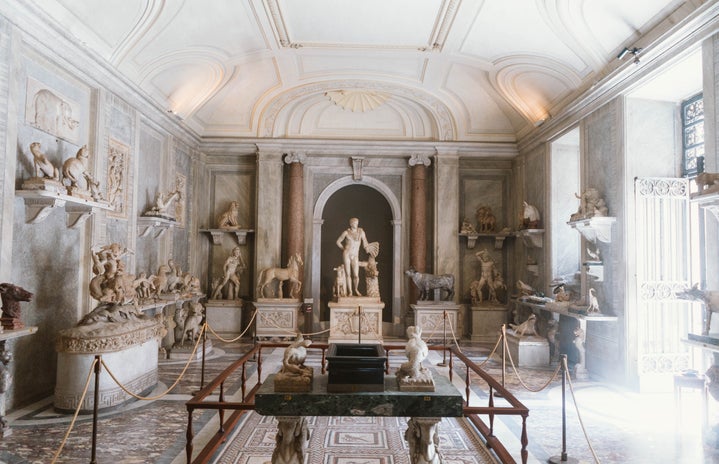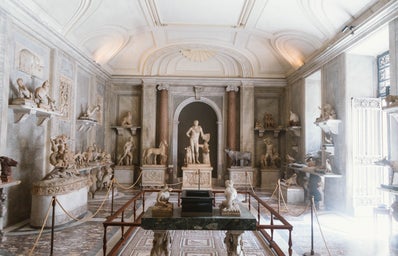International Museum Day is celebrated on May 18th and this date is really important to stimulate the conversation about some topics associated with culture and the accessibility of art around the globe. Museums were seen in the past only as spaces where different artistic, cultural and historical manifestations were kept, and also places to exhibit and preserve those important scientific objects. At that time, the access to those places were really restricted, kept by people with high purchasing power. Nowadays, it’s common knowledge that museums have an important role in a country’s historical-cultural patrimony and also are really important to preserve a nation’s cultural memory. Their access is now, at some times, available to the general public, with no restrictions, in free places, whose mission is to educate, preserve and disseminate a place’s history. So why is art still so elitist in the most different societies? Making museums free places does not make them accessible, there are a lot more things that need to change to make art visible and attainable to every different group of people in society.
The concept of social inclusion refers to a set of measures that seek the integration of marginalized groups into society. They are actions that aim to guarantee the equal visibility of all people in society, no matter their social condition, gender, physical condition, ethnicity, sexual orientation, among other things. Its importance is the combat against social segregation and the viability of goods and services to all citizens, such as: health, education, leisure, culture and employment. Brazilian Ministry of Culture research, made in 2014, shows that 75% of the population don’t attend museums, and among all the different reasons for that, stands out the fact that the interviewees don’t feel that they belong to those spaces and don’t identify with what is exhibited. In this way, cultural inclusion depends not only on the formation of a consumer public or to make those places free to attend, but also on the redefinition of some rooted values.
Despite the increasing debate around accessibility, when it comes to cultural productions these resources are still really neglected, both when we talk about artists with disabilities or with low purchasing power, and also when we refer to the people who have access to these artistics manifestations. The economic factor is, most of the times, the main hindrance when it comes to the production of accessible events. But also, making these places attendable to people with disabilities should be taken as something of greater importance nowadays too. However, the problem is not the lack of a specific legislation or a technology that is capable of attending to those public’s demands, but the lack of interest of governments to invest in these things. Culture and art need to be seen as valuable social inclusive devices, and for that reason need to be attainable to the most different kinds of people.
Metropolitan regions around the world still concentrate the highest cultural consumption index while, the low-income population, black and outskirts people are the most affected. Therefore, knowing that museums are spaces that are part of cultural and artistic production, expanding their accessibility should be taken into account. And because museums are still exclusivist environments nowadays, a lot of negative impacts on the cultures of countries are generated. The access to culture and art is fundamental in the personal, moral and intellectual formation of an individual, and also in his ability to relate to others. Also, culture is what remains of a place’s history, the values and art pieces that remain still until today, and that should be something every person should have access to and identify with.
What we should be questioning ourselves is why, even though nowadays there is so much talk about inclusion, the cultural scope is still left a lot aside. The reason for that is probably the difficulty of powerful people in the business to abandon old manners. Art, since its birth, is elitist, made for the rich people, and that conception still exists in the present. The idea of art being something untouchable, and museums being places really hard to attend, ended, legally, years ago, but it is clear that a lot of progress needs to be made for that anyone can and feel free to attend any place and have access to everything regardless of their social or physical condition.
To improve the access to art for people who don’t have a voice in society, it is of paramount importance to think about what keeps them in this condition the most: high prices, social barriers and inaccessibility. It is not only expensive places that obligates them not to attend cultural environments, but the huge social inequality, the rooted ideia of art being in this distant and unattainable place, and also the fact that a lot of places are not projected for people with disabilities. For that change to happen, privileged groups in society should be involved in this project, and use their power to make this theme seen and, finally, promote a change.
————————————————-
The article above was edited by Camila Lutfi.
Liked this type of content? Check Her Campus Cásper Líbero for more!


